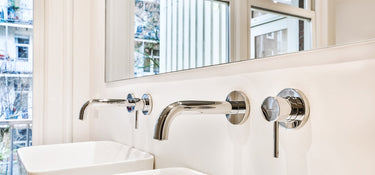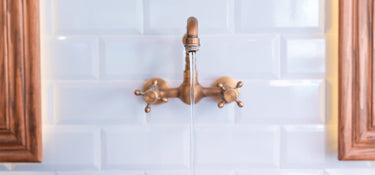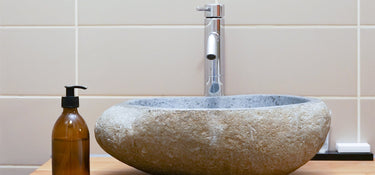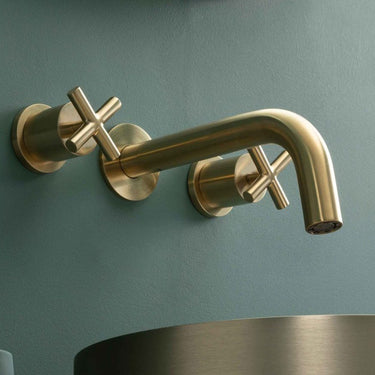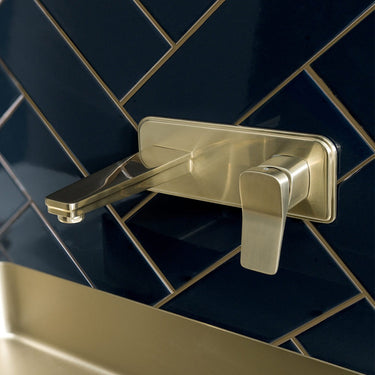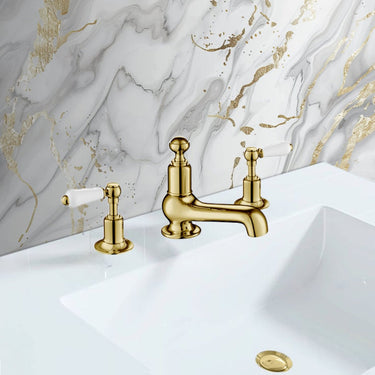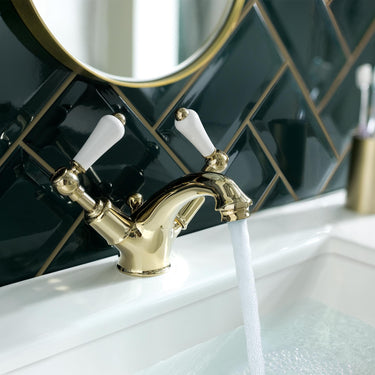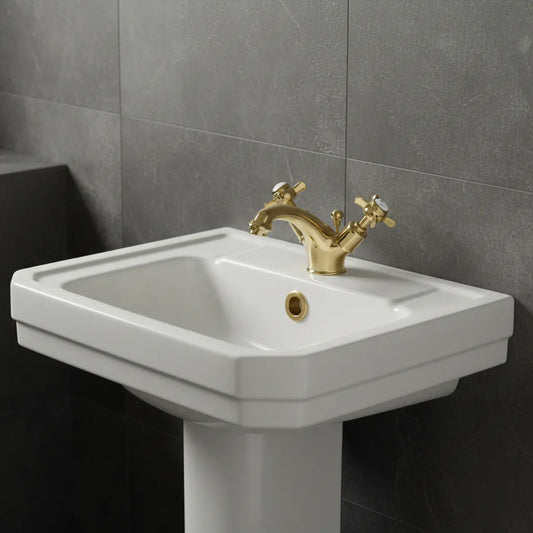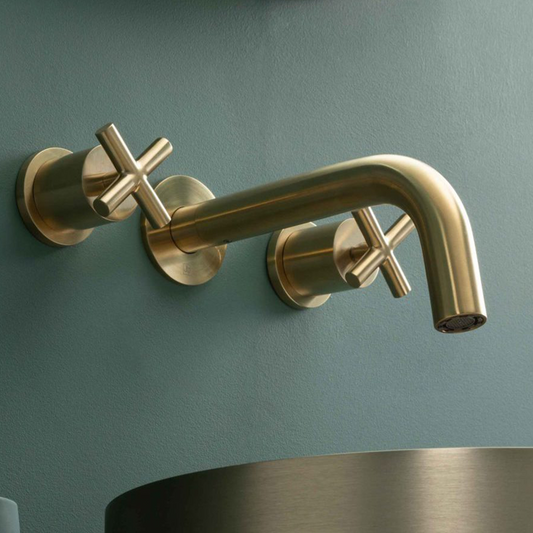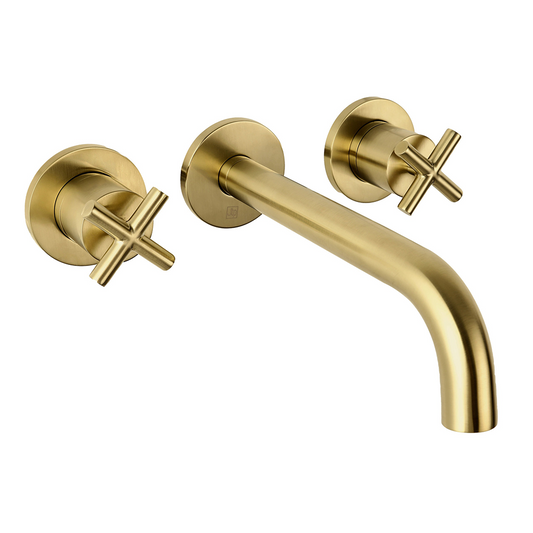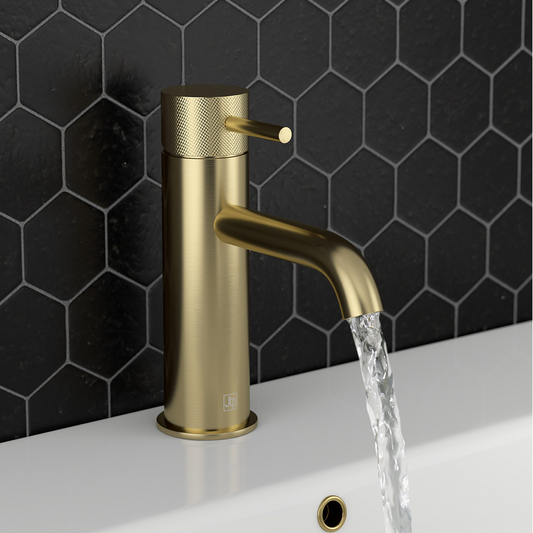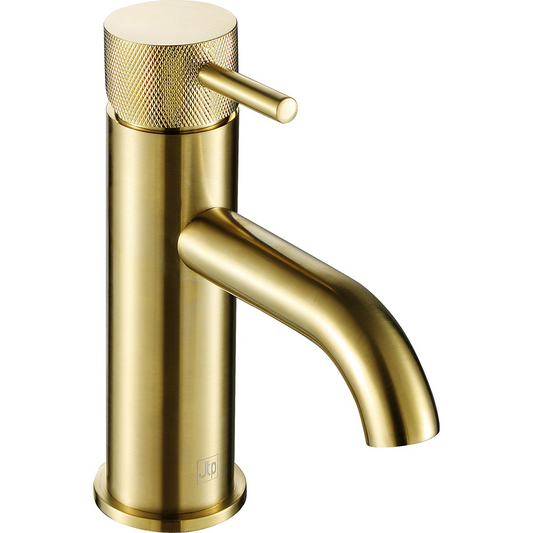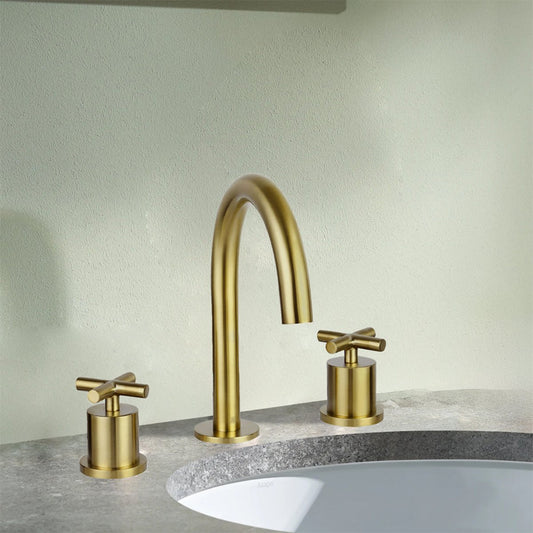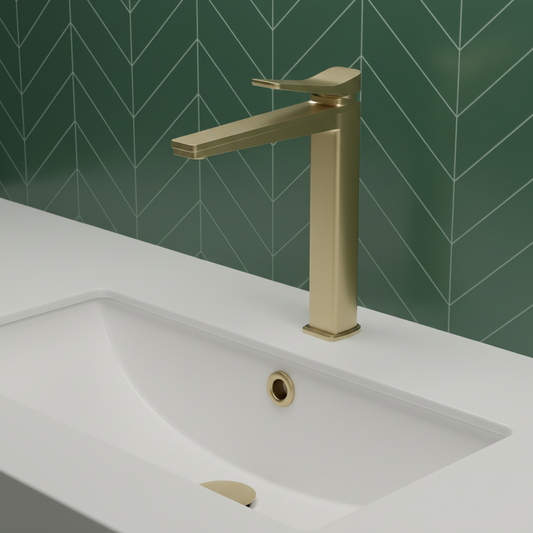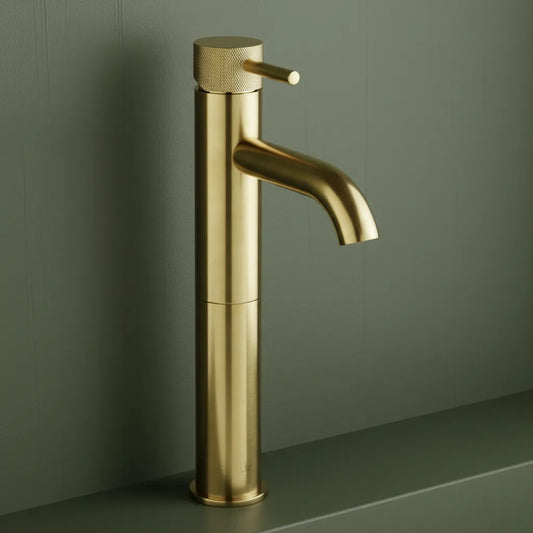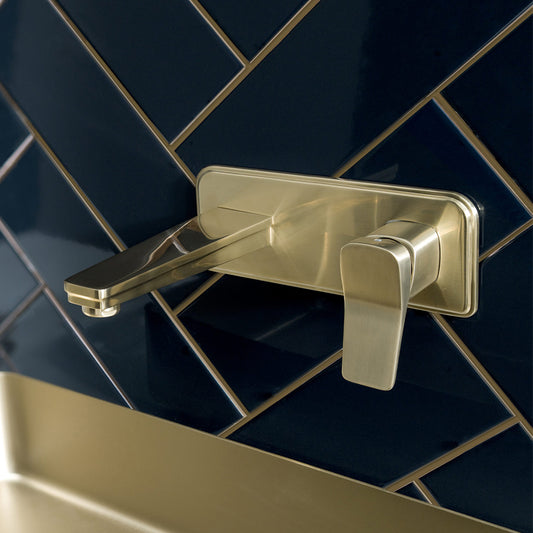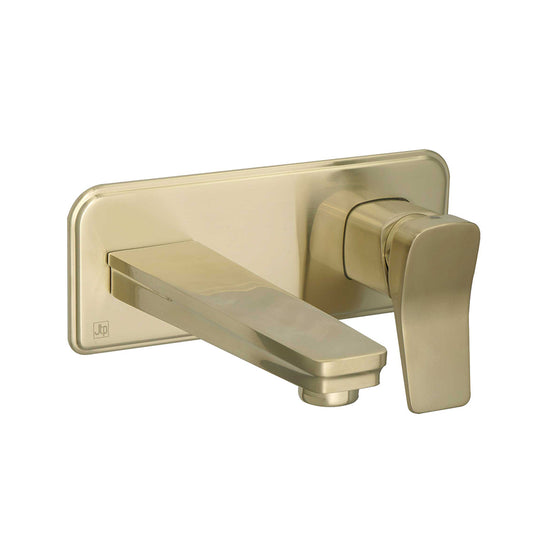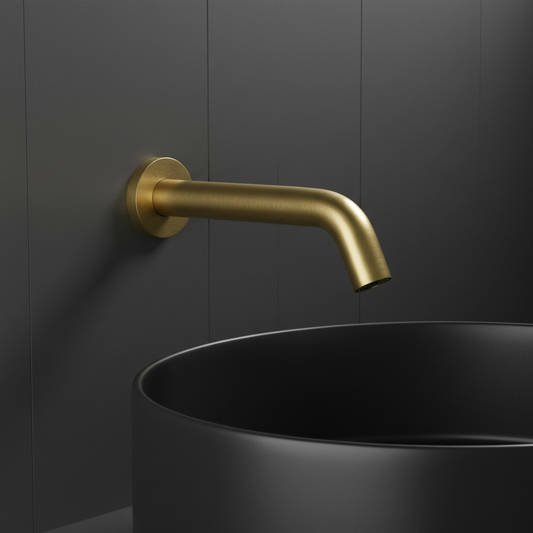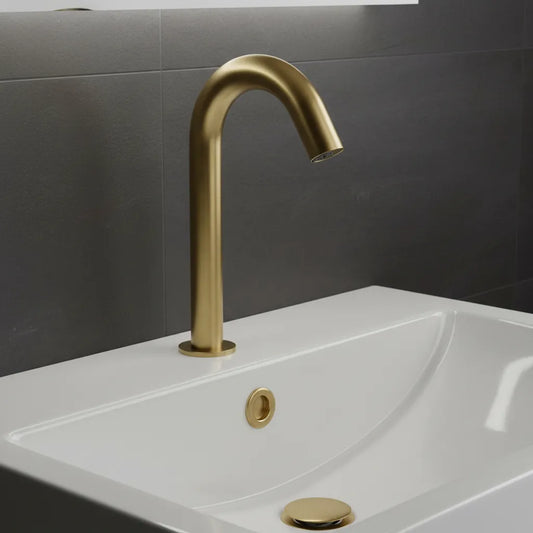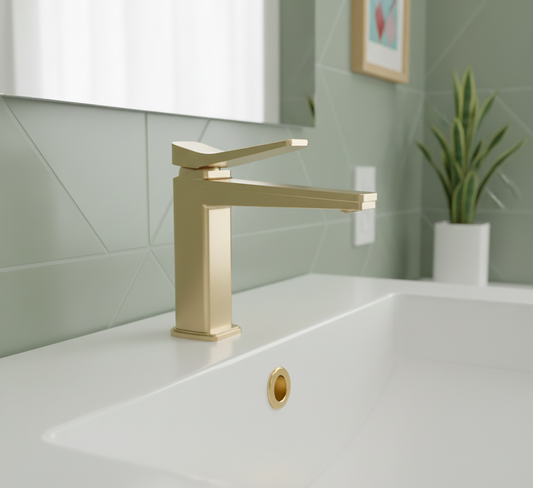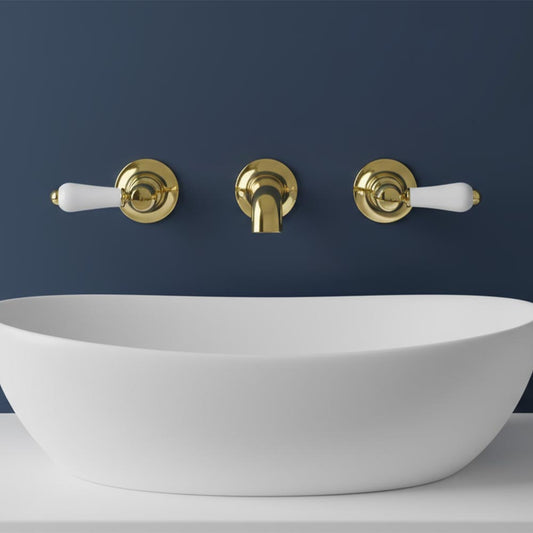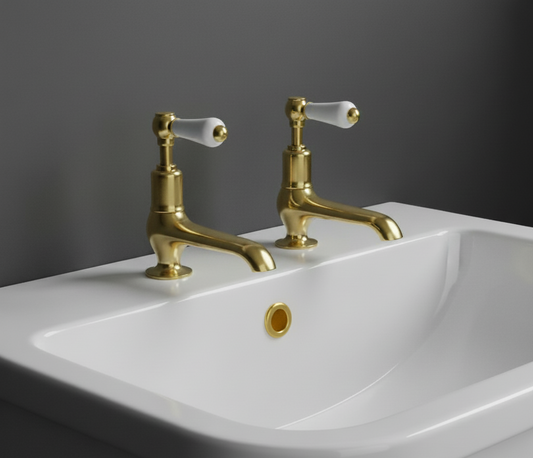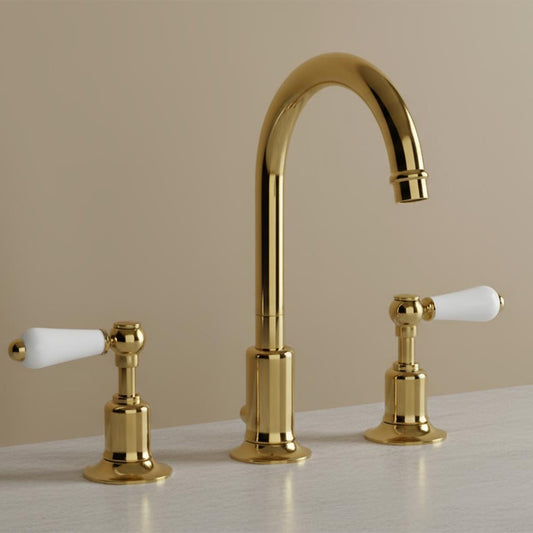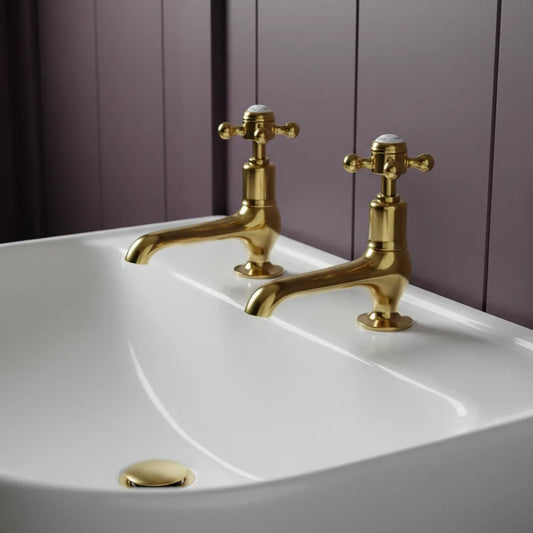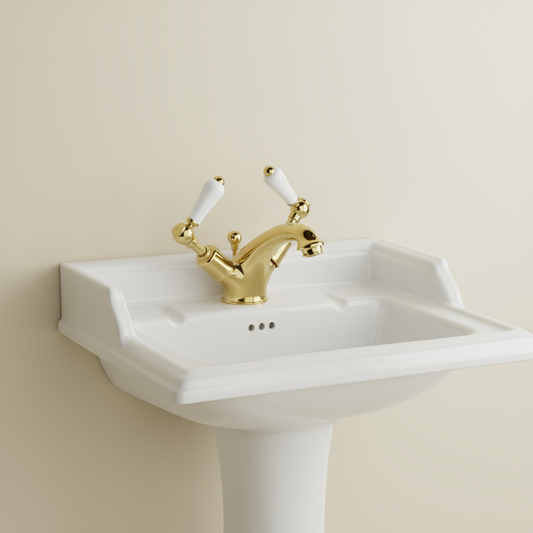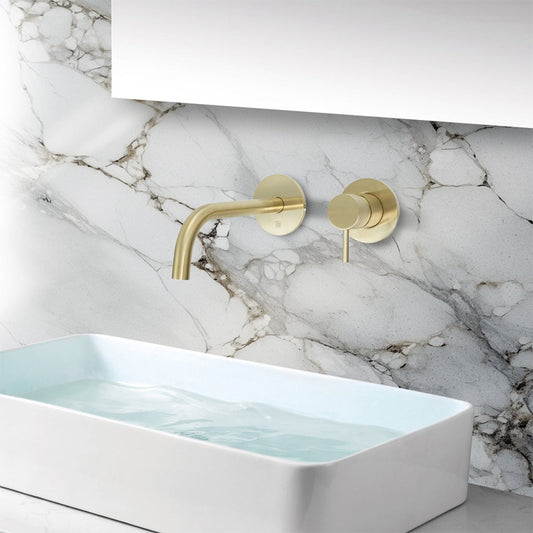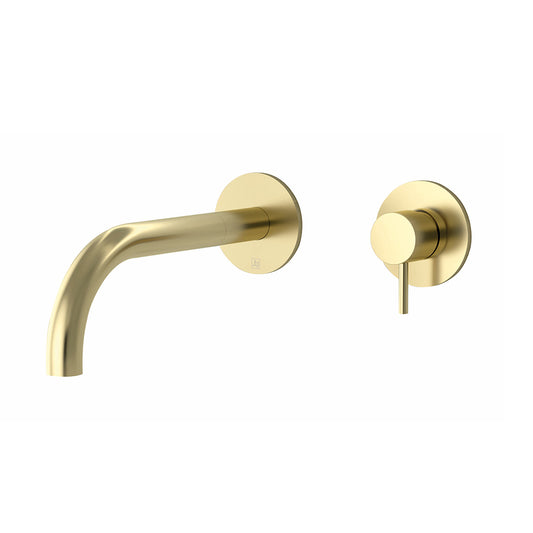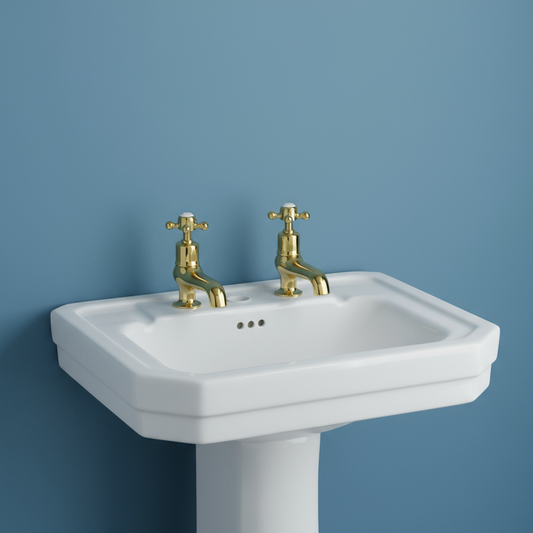A Comprehensive Guide to Basin Taps: Understanding the Different Types and Styles
Table Of Contents:
-
Introduction to Basin Taps
→ -
Types of Basin Taps
→ -
Styles of Basin Taps
→ -
Material Options
→ -
Installation Tips
→ -
Maintenance and Care
→ -
Benefits of Choosing the Right Basin Tap
→ -
Factors to Consider While Selecting the Right Basin Taps
→ -
Conclusion
→
Introduction to Basin Taps
Basin taps are crucial fixtures in any bathroom, serving both functional and aesthetic roles. They control the flow and temperature of water from the basin, impacting daily routines and overall bathroom design. With numerous options available, selecting the right basin tap involves understanding its various types and styles. A well-chosen tap not only enhances the bathroom’s appearance but also ensures optimal performance and convenience. This guide will explore different types and styles of basin taps, helping you make an informed choice that complements your bathroom's design while meeting practical needs.
Types of Basin Taps
Single Lever Taps
Single lever taps feature a single handle that controls both water flow and temperature. This design is characterized by its simplicity and ease of use. The single lever allows users to adjust the water temperature and flow rate smoothly with one hand, making it ideal for modern bathrooms and compact spaces. Its user-friendly nature is particularly advantageous in situations where multitasking is required, such as washing hands while managing other tasks. Single lever taps often come in sleek, contemporary designs that enhance the minimalist aesthetic of modern bathrooms. Their straightforward operation is also beneficial for households with children or elderly individuals, providing a more accessible and intuitive control mechanism.

Dual Lever Taps
Dual lever taps are equipped with separate levers for hot and cold water, offering precise control over water temperature. Each lever independently adjusts the flow of either hot or cold water, allowing users to mix the two to achieve the desired temperature. This type of tap is often favored for its traditional charm and the precision it provides in temperature control. It suits bathrooms with a classic or vintage theme, adding a touch of elegance with its more intricate design elements. Dual lever taps require users to engage both levers to find the perfect temperature, which can be a bit less convenient compared to single lever taps, but many people appreciate the precise control they offer.
Mixer Taps
Mixer taps combine hot and cold water from a single spout, allowing users to control the temperature with a single handle or lever. This integration provides a convenient and streamlined approach to adjusting water temperature. Mixer taps are known for their versatility, as they cater to various preferences and bathroom styles. They can be a great choice for both contemporary and traditional settings, offering a balance between modern functionality and classic appeal. The ease of achieving the right water temperature with a single control enhances user experience and makes them a popular option for various bathroom designs.

Wall-Mounted Taps
Wall-mounted taps are installed directly on the wall above the basin, which helps to save countertop space and creates a sleek, contemporary look. This installation method is particularly suitable for modern bathrooms where space efficiency and a minimalist design are prioritized. Wall-mounted taps are often paired with basins that have a floating appearance or are wall-mounted themselves, contributing to an uncluttered and open bathroom environment. This type of tap requires careful installation to ensure that it is properly aligned and securely fixed, but it offers a stylish and space-saving solution that enhances the overall bathroom design.
Deck-Mounted Taps
Deck-mounted taps are installed on the deck or surface around the basin, making them a traditional and versatile option. This installation method is common in both modern and classic bathroom designs, providing a stable and reliable fixture. Deck-mounted taps can be adapted to various basin types and styles, making them a flexible choice for many bathroom setups. They offer a classic appearance that can complement a wide range of design themes, from traditional to contemporary. Installation of deck-mounted taps is generally straightforward, and they provide a practical and aesthetic solution for a variety of bathroom configurations.

Styles of Basin Taps
Modern Taps
Modern basin taps are characterized by their sleek, minimalistic design, often featuring smooth lines and geometric shapes. These taps are typically finished in contemporary materials such as chrome, matte black, or brushed nickel. The clean, unadorned aesthetics of modern taps complement a variety of bathroom styles, especially those with a contemporary or minimalist theme. Their design focuses on functionality with a streamlined look, making them a popular choice for modern bathrooms that prioritize simplicity and elegance.
The modern design also extends to the tap’s functionality. Many modern taps include features like single-lever controls, which allow users to adjust both water flow and temperature with ease. This integration not only enhances convenience but also contributes to a clutter-free appearance. Modern taps often incorporate advanced technology for better water flow control and energy efficiency, making them both stylish and practical. Their versatile design ensures they blend seamlessly into a range of bathroom decors while providing reliable performance.
Vintage Taps
Vintage basin taps bring a touch of classic elegance to the bathroom with their ornate details and traditional design. These taps often feature intricate patterns, decorative handles, and finishes that evoke a sense of nostalgia and historical charm. Commonly finished in antique brass or copper, vintage taps add a timeless appeal to bathrooms designed with a retro or period-inspired theme. Their design often includes traditional lever or cross handles that provide a classic look and feel.
The vintage style of these taps is not just about aesthetics; it also reflects traditional craftsmanship and attention to detail. Many vintage taps are designed to replicate historical designs, making them ideal for creating a period-specific bathroom atmosphere. While their appearance is rooted in the past, vintage taps can be fitted with modern plumbing technology to ensure functionality and reliability. Their combination of historical charm and modern performance makes them a popular choice for those seeking to create a classic bathroom environment.
Industrial Taps
Industrial taps are known for their robust, utilitarian appearance, characterized by exposed pipes, fittings, and a rugged design. This style draws inspiration from industrial design principles, showcasing a raw and practical look that fits well in modern or rustic bathroom settings. Typically made from metal, industrial taps often feature a minimalist design with visible hardware, contributing to their distinctive, no-frills aesthetic.
The industrial style emphasizes durability and functionality, often incorporating robust materials and construction techniques to withstand heavy use. This design choice aligns with the practical, no-nonsense ethos of industrial décor. Industrial taps can create a striking contrast in a bathroom, adding a bold, edgy element to otherwise sleek or traditional spaces. Their practical design and sturdy build make them suitable for both contemporary and rustic bathroom themes, reflecting the strength and durability associated with industrial aesthetics.
Material Options
Brass
Brass is a highly durable and corrosion-resistant material commonly used in basin taps. Known for its robustness, brass taps are often finished with chrome, gold, or other plating to enhance their appearance and protect them from tarnishing. The use of brass ensures that the tap can withstand the wear and tear of daily use while maintaining its structural integrity over time. Its natural resistance to corrosion makes it an ideal choice for high-moisture environments like bathrooms.
In addition to its practical benefits, brass offers a classic aesthetic that can complement both traditional and contemporary bathroom designs. The material’s versatility allows for various finishes, including polished, brushed, or antique looks, to suit different styles. Brass taps are valued for their long-lasting performance and timeless appeal, making them a popular choice for those seeking a blend of durability and elegance in their bathroom fixtures.
Stainless Steel
Stainless steel is a modern material known for its sleek, hygienic finish and excellent resistance to rust and staining. Its smooth surface is easy to clean and maintain, making it a practical choice for bathroom taps where hygiene and aesthetics are important. Stainless steel taps often feature a contemporary look with finishes such as brushed or polished steel, aligning with modern bathroom designs.
The material’s resistance to corrosion and staining ensures that stainless steel taps retain their appearance and functionality over time, even in the challenging conditions of a bathroom environment. Stainless steel’s sleek finish adds a touch of sophistication to modern bathroom designs, while its durability ensures long-term performance. Choosing stainless steel taps combines both practical benefits and a stylish, contemporary appearance, making them a favored option for those seeking modern functionality and visual appeal.
Ceramic
Ceramic taps are appreciated for their classic look and smooth, glossy finish. This material is commonly used in taps for its aesthetic appeal and ease of cleaning. Ceramic taps often feature intricate designs and traditional finishes, making them suitable for classic or vintage-style bathrooms. They provide a polished and elegant appearance, enhancing the overall look of the bathroom while being easy to maintain.
However, ceramic taps can be prone to chipping if not handled carefully, which is a consideration for their durability. Despite this, ceramic remains a popular choice due to its timeless style and ease of maintenance. The smooth surface of ceramic taps is resistant to staining and buildup, contributing to their longevity and attractiveness. Overall, ceramic taps offer a blend of classic elegance and practicality, fitting well into various bathroom styles.

Installation Tips
Proper installation of basin taps is crucial to ensuring their optimal performance and longevity. Here are some detailed tips to guide you through the process:
-
Compatibility Check:
Before starting the installation, verify that the new basin tap is compatible with your basin and existing plumbing. Check the size and type of the tap, as well as the faucet holes in your basin. Ensure that the tap's design matches the configuration of your basin and that it fits the mounting style (e.g., deck-mounted or wall-mounted). Compatibility is essential for avoiding installation issues and ensuring a smooth setup. -
Gather Tools and Materials:
Assemble all necessary tools and materials before you begin. Commonly required tools include an adjustable wrench, plumber's tape (Teflon tape), a basin wrench, and a screwdriver. Plumber’s tape is used to create a watertight seal on threaded connections, preventing leaks. Having all tools on hand will streamline the installation process and reduce the likelihood of interruptions. -
Turn Off the Water Supply:
To prevent water damage and leaks, turn off the water supply before beginning the installation. Locate the shut-off valves under the sink and turn them clockwise to close them. Open the faucet to drain any remaining water in the pipes. This step is crucial for avoiding spills and ensuring a clean installation environment. -
Remove the Old Tap:
If you are replacing an existing tap, remove it carefully. First, disconnect the water supply lines from the old tap using an adjustable wrench. Then, unscrew the mounting nuts holding the tap in place and lift it out. Clean the area around the basin to ensure a smooth installation of the new tap. Removing the old tap properly will help in installing the new one without complications. -
Install the New Tap:
Follow the manufacturer’s instructions for installing the new basin tap. Apply plumber’s tape to the threads of the faucet connections to ensure a watertight seal. Position the new tap over the mounting holes and secure it in place with the provided mounting hardware. Tighten the nuts carefully, ensuring that the tap is firmly installed but not overtightened, which could damage the basin. -
Connect Water Supply Lines:
Connect the water supply lines to the new tap, ensuring that the hot and cold lines are properly matched. Use an adjustable wrench to tighten the connections, but be cautious not to over-tighten. Double-check that the connections are secure to prevent leaks. Properly connecting the water supply lines is essential for the tap to function correctly. -
Test the Installation:
Once the new tap is installed and the connections are secure, turn the water supply back on. Open the tap to check for leaks and ensure that the water flow is consistent. Test both the hot and cold water functions, and make any necessary adjustments to the tap’s position or water temperature controls. Testing the installation ensures that the tap operates correctly and that there are no issues with leaks or performance. -
Final Adjustments:
After testing the tap, make any final adjustments to its position or alignment. Ensure that the tap is level and properly aligned with the basin. If necessary, tighten any loose connections or make adjustments to the faucet handle for smooth operation. Final adjustments help achieve a polished and functional installation.
Maintenance and Care
Regular maintenance and care are essential for keeping basin taps in excellent condition. Here are some detailed tips to help you maintain and care for your taps:
-
Regular Cleaning:
To keep your basin taps in top condition, regular cleaning is essential. Use a mild, non-abrasive cleaner and a soft cloth to wipe down the surface of the tap. Avoid harsh chemicals or abrasive materials that can damage the finish. Regular cleaning helps prevent the buildup of grime, soap scum, and mineral deposits, which can dull the appearance of the tap and affect its functionality. By maintaining a regular cleaning routine, you ensure that your taps remain attractive and operate smoothly over time. -
Addressing Leaks:
Leaks around the tap base or handles should be addressed promptly to prevent water damage and conserve water. Leaks are often caused by worn-out washers, seals, or loose connections. Inspect the tap regularly for any signs of leaks and tighten any loose fittings as needed. If the leak persists, you may need to replace worn-out components. Addressing leaks quickly helps maintain the tap’s functionality and prevents potential water damage to your bathroom. -
Preventing Hard Water Buildup:
Hard water can lead to the formation of mineral deposits and limescale on the tap’s surface. To prevent buildup, wipe the tap dry after each use and periodically clean it with a solution of equal parts water and vinegar. Vinegar helps dissolve mineral deposits and keeps the tap looking clean. Regular maintenance prevents the accumulation of limescale, which can affect the tap’s performance and appearance. Preventing hard water buildup ensures that your taps remain in good condition and continue to function effectively. -
Checking Water Flow:
Periodically check the water flow from the tap to ensure it is consistent and unobstructed. A reduction in water flow may be due to a clogged aerator or sediment buildup. Remove the aerator from the tap and clean it thoroughly to restore proper water flow. Regularly checking and maintaining the water flow helps ensure that the tap operates efficiently and provides a consistent water supply. Addressing any flow issues promptly helps maintain the tap’s performance. -
Inspecting for Wear and Tear:
Regular inspections of your basin taps are essential to identify signs of wear and tear, such as cracks, chips, or corrosion. Inspect the tap’s surface and connections for any damage that could affect its functionality. If you notice significant wear, consider replacing the tap or seeking professional assistance for repairs. Regular inspections help identify potential problems early and maintain the tap’s functionality and appearance. Addressing wear and tear promptly helps ensure the longevity of the tap. -
Maintaining Finish and Shine:
To keep the tap’s finish looking polished and new, use a soft cloth to buff the surface after cleaning. Avoid using abrasive materials that can scratch or damage the finish. Maintaining the tap’s appearance enhances the overall look of your bathroom and ensures that the tap remains an attractive fixture in your space. Regularly polishing the tap helps preserve its shine and contributes to a well-maintained and visually appealing bathroom. -
Addressing Common Issues:
Common issues with basin taps, such as low water pressure or difficulty turning handles, may require adjustment or repair. For low water pressure, check for clogs in the aerator or supply lines. Difficulty turning handles may indicate worn-out components that need replacement. Addressing these issues promptly helps ensure that the tap continues to function smoothly and effectively. Regular maintenance and prompt repairs contribute to the overall performance and longevity of the tap.
By following these installation tips and maintenance guidelines, you can ensure that your basin taps perform well and remain in good condition for years to come. Proper installation and regular care contribute to the longevity and efficiency of your taps, enhancing your overall bathroom experience.
Benefits of Choosing the Right Basin Tap
Enhances Bathroom Aesthetics:
The basin tap is a key visual element in the bathroom, and its design can significantly impact the overall look of the space. Choosing a tap that complements your bathroom’s decor can elevate the room's aesthetics. For example, sleek, modern taps with clean lines and high-polish finishes can enhance the contemporary feel of a modern bathroom. Conversely, ornate vintage taps with detailed designs and classic finishes can add a touch of elegance to a traditional bathroom. The right tap acts as a focal point, drawing attention and setting the tone for the entire space. It can also serve as a design statement, reflecting your personal style and contributing to the overall cohesion of the room.
In addition to its visual appeal, a well-chosen tap can harmonize with other bathroom fixtures, such as the sink, mirror, and cabinetry. This coordination ensures that the tap not only stands out but also integrates seamlessly with the rest of the design elements. For instance, a brushed nickel tap can match beautifully with other nickel fixtures, creating a unified look. The choice of a tap should therefore be guided by its ability to complement and enhance the existing decor, contributing to a polished and thoughtfully designed bathroom.
Improves Functionality and Ease of Use:
The functionality of a basin tap is critical to daily use, and choosing the right one can make a significant difference in your bathroom experience. Single lever taps, for instance, offer the convenience of controlling both water temperature and flow with one handle. This simplicity is particularly beneficial in busy households or for individuals with mobility issues, as it allows for easy adjustments with minimal effort. On the other hand, dual lever taps, which separate controls for hot and cold water, provide precise temperature regulation, making them ideal for users who prefer fine-tuned adjustments.
The ease of use extends beyond just temperature control. Features like smooth operation, ergonomic handles, and intuitive design contribute to a more pleasant and efficient user experience. High-quality taps are engineered to operate smoothly, reducing the effort needed to turn them on or adjust the flow. This improved functionality not only enhances daily routines but also adds to the overall comfort and efficiency of the bathroom.
Increases the Value of the Bathroom: Investing in high-quality basin taps can increase the value of your bathroom and, by extension, your property. Prospective buyers often look for modern, well-maintained fixtures that enhance the functionality and appeal of a bathroom. High-end taps, with their superior design and materials, can serve as attractive features that set your bathroom apart from others. They signal to potential buyers that the space is thoughtfully designed and well cared for, potentially making your property more appealing in a competitive real estate market.
Moreover, quality taps contribute to the longevity and overall condition of the bathroom. High-quality materials and craftsmanship ensure that the taps withstand daily use and maintain their appearance over time. This durability reduces the need for frequent replacements or repairs, further enhancing the value of the bathroom as a long-term investment.
Factors to Consider While Selecting the Right Basin Taps
1. Basin Compatibility:
Ensuring that the basin tap is compatible with your basin’s size, shape, and installation type is crucial for optimal performance and aesthetics. The tap must be suitable for the basin’s mounting arrangement—whether it's a countertop-mounted, wall-mounted, or integrated basin. For instance, a wall-mounted tap requires sufficient wall space and proper plumbing behind the wall, while a deck-mounted tap needs to be installed on the basin’s rim or surrounding surface.
Compatibility also affects the practical aspects of use, such as water flow and ease of operation. A tap that is too high or too low for the basin can lead to splashing or difficulty in use. Measuring the dimensions of your basin and comparing them with the specifications of potential taps can help ensure a perfect fit. This consideration prevents issues like leaks or improper installation and ensures that the tap complements the basin’s design and functionality.
2. Water Pressure:
The water pressure in your home plays a significant role in the performance of the basin tap. Different taps are designed to operate optimally at specific pressure levels. For example, taps designed for high-pressure systems may offer powerful and consistent water flow, while those suited for low-pressure systems might have flow restrictors to ensure efficient performance.
Choosing a tap that matches your home’s water pressure prevents issues such as inconsistent flow, poor temperature control, or low performance. To determine your water pressure, you can use a pressure gauge or consult a plumbing professional. Ensuring that the tap’s specifications align with your water pressure will enhance its functionality and longevity, providing a more satisfying and reliable user experience.
3. Budget:
Balancing cost with features and quality is essential when selecting a basin tap. Taps are available at various price points, and it’s important to find an option that meets your needs without exceeding your budget. While higher-priced taps often offer superior materials and advanced features, there are also affordable options that provide good value.
Consider the long-term benefits of investing in a higher-quality tap, such as durability and reduced maintenance. A well-made tap can provide better performance and a longer lifespan, potentially saving money on replacements or repairs in the future. Comparing different models and brands allows you to find a tap that offers the best combination of features, quality, and cost-effectiveness, ensuring you make a wise investment that aligns with your budget.
4. Style Consistency:
The basin tap should align with the overall design theme of your bathroom to ensure a cohesive look. Whether your bathroom features a modern, traditional, or eclectic style, the tap should complement other fixtures and decor elements. For example, a sleek, minimalist tap with clean lines and a chrome finish would suit a contemporary bathroom, while a vintage tap with ornate details and a brass finish would enhance a classic design.
Consistency in style ensures that the tap enhances the overall aesthetic rather than detracting from it. Consider how the tap will integrate with other elements such as the sink, mirror, and cabinetry. Choosing a tap that matches the bathroom’s design theme creates a unified and harmonious space, contributing to a well-designed and visually appealing room.
5. Ease of Use:
User-friendly features are important, especially if the bathroom is used by a diverse group of people, including children and the elderly. Features such as single lever controls, ergonomic handles, and smooth operation can enhance ease of use and accessibility. A tap that is easy to operate reduces the risk of frustration and ensures that all users can comfortably manage water flow and temperature.
Look for taps that offer intuitive controls and ergonomic design, making them easy to adjust and use. Features like lever handles that require minimal effort or taps with clear markings for temperature and flow can significantly improve the user experience. Prioritizing ease of use ensures that the tap meets the needs of all household members, contributing to a functional and enjoyable bathroom environment.
Conclusion
Choosing the right basin tap involves evaluating various factors such as type, style, material, and installation requirements. Understanding the different options available will help you make an informed decision that enhances both the functionality and aesthetics of your bathroom. Whether you prefer modern, vintage, or industrial designs, selecting a tap that meets your practical needs and complements your bathroom decor will ensure a satisfying and stylish upgrade to your space. By considering factors like basin compatibility, water pressure, budget, style consistency, and ease of use, you can create a bathroom environment that is both functional and visually appealing.
Discover more at Gold Bathroom UK !




